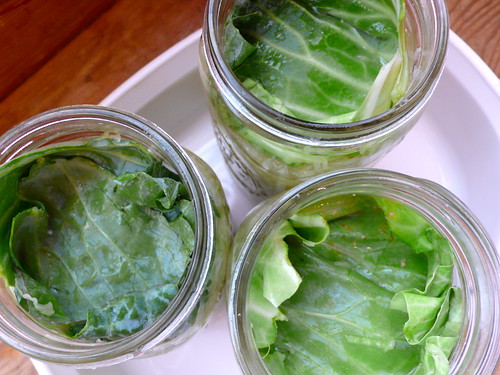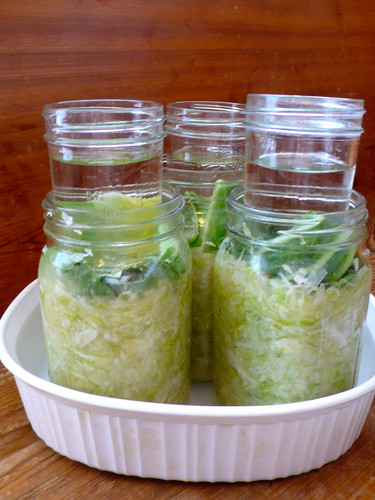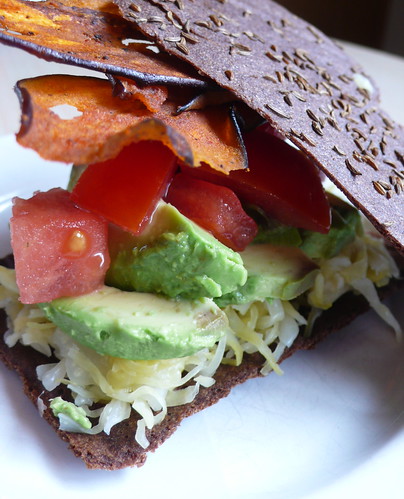I am fascinated by fermentation and culturing. I have, at different times, cultivated cycles of kombucha tea, water kefer, and yogurt, and I love being able to have live, active probiotics in my diet. It's good for the digestion and yeast balances in the body, as well as countless other health benefits. When I first read about making raw, fermented sauerkraut in Ani's Raw Food Essentials by Ani Phyo
First I shredded one rather large head of cabbage very thinly and evenly with my mandoline slicer (saving the very outer leaves to use as the "covers" for fermenting). Then I massaged a tablespoon of sea salt into the cabbage until it started to look a little bit "cooked" or pickled, and it became a bit wet. Next, I mixed in a tablespoon of white Miso paste, because introducing a live, active culture to the kraut helps speed the fermentation process, and I get a little impatient (this step is not strictly necessary -- the cabbage has enough natural cultures on it to ferment itself with no help, but I just wanted results more quickly. I've also used a big splash of kombucha, and another time I used some water kefir). I packed the cabbage tightly into three mason jars, tucked them in firmly with pieces of the outer cabbage leaves, and topped them up a bit with salt water to cover (1 tablespoon of salt to 1 cup water).

I weighed down the kraut with smaller mason jars half-filled with water and placed them into a large casserole dish (to catch any drips in case of bubble-over later on), and covered with a kitchen towel.

Finally, I tucked the whole thing into a dark corner of my pantry and let it do it's thing. I checked on it occasionally to make sure that it didn't need to be fed any more salt water, and also checked for mold or white scum, but this batch was super well-behaved and needed no extra attention. Today when I tasted it, it was done!! Perfectly tangy and delicious, and perfectly healthy. Love it! (You can let it go for much longer, but it's all according to your taste preference and if you innoculated it with extra fermenting power, like miso paste, etc. -- this one tasted exactly right to me at 6 days.)
Sandwiched between "pumpernickel rye" raw flatbread (recipe also in Ani's Raw Food Essentials by Ani Phyo

I'm not giving up real Reuben sandwiches forever, but I'm so excited to know that I can create an acceptable substitute that makes me feel great afterwards, instead of feeling like I need a serious nap. Raw foods are just fabulous like that.
Here's a blog post with a few more step-by-step photos if you need to see the whole process before you take the plunge into kraut making.
No comments:
Post a Comment